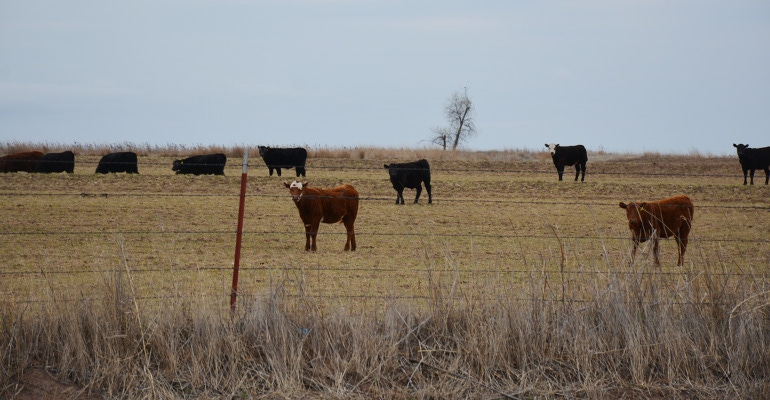June 4, 2018

Sustainable agriculture, rangeland management, and land conservation – call it what you will, but the hope and future of tomorrow’s food production may well hinge on the decisions you make today to protect the natural resources necessary to ensure mankind’s food supply in the years to come.
This week, on June 7-8, Texas Tech University’s College of Agricultural Sciences and Natural Resources, New Mexico State University’s Department of Animal and range Sciences and the National Ranching Heritage Center present the 2018 Sustainable Rangelands Symposium in Lubbock, an annual conference that promotes sustainable rangelands management to preserve the heritage of agriculture for generations to come.
“This symposium has been organized to address sustainable rangelands from the viewpoint of the entire livestock industry and what constitutes sustainable rangelands from the context of soils, vegetation, water, economics, to a lesser extent sociological impacts, as well as livestock production,” said Dr. Ronald E. Sosebee, Professor Emeritus, Texas Tech University.
Sosebee has been promoting rangelands sustainability for many years, and says without it, resources will continue to disappear, bringing about a dystopian landscape incapable of producing the food required by future generations.
“Overgrazing has left a lasting imprint on the arid lands of North America, and little has been accomplished in attempts to restore the land to its original productivity,” he adds.
This, he says, must change if we are to have hope our sons and daughters have the resources necessary to support the generations to come.
Scholars from varying disciplines will lead symposium participants through the latest research and methods of achieving rangeland sustainability focusing on the principals of stewardship, conservation, quality of life and ranchland profits.
SARE (Sustainable Agriculture Research and Education) is an organization that provides grants and education to advanced innovations in sustainable agriculture. According to their website, sustainable rangeland management can involve multiple strategies. It might include ranchers dividing rangelands for rotational grazing to better manage soil and water resources while improving animal productivity. A field crop farmer might implement a rotation to break up pest cycles, improve soil fertility and cut costs, or use cover crops to benefit soils and suppress weed development.
“No one recipe for sustainability works for every producer,” SARE advises, but the future of food production depends on the steps modern agriculture takes now to extend the usefulness of our land and its resources.
Industry conservationists say farmers and ranchers should hope for the best but plan for the worst when it comes to sustainability issues, especially periods of troublesome drought. Recent rounds of severe drought in Western rangelands have caused a critical need for management strategies. The idea that to maintain a constant herd size during such times, regardless the lack of feed and water, is unreasonable.
“This crisis usually leads to degraded rangelands, lower birth rates, fewer pounds to sell and financial stress. Instead, a more sustainable drought plan includes a two-pronged approach: protect the soil while maintaining a modest income over the long run,” advises sustainability advocates.
In Texas’ slice of the High Plains region, water scarcity drives decision-making for farmers and ranchers. Researchers at Texas Tech are experimenting with warm-season grasses and innovative rotations of cattle and cotton to stretch their aquifer-dependent water supply.
Vivien Allen, a Texas Tech researcher who has won two SARE grants, is testing Bermuda grasses, Dahl bluestem and Tifton 85, which are water-efficient and saline tolerant.
“It’s hot, it’s dry – that’s what’s adapted out here,” Allen says.
In addition, and often related to drought, soil health is a major determining factor for rangeland sustainability. Logging, tillage, multi-species grazing, noxious weeds, and disasters like wildfires also drive up the risk of depleting resources and making the land unproductive.
““The overgrazing that destroyed or severely altered the original grass cover of the rangelands of Mexico and the United States began in Mexico after the Spanish conquest and spread into the U.S. Southwest. By the early part of the 19th century, overgrazing was already a fact on both sides of the international boundary,” Sosebee warned.
And the problem not only continues, it has escalated in more contemporary times.
“Nearly 90 percent of North American arid lands are moderately and severely desertified. The status of the U.S. rangelands does not appear to have been much improved in recent years, and less than 20 percent is producing anywhere near its potential,” he adds.
While the principles of range management and sustainability are complex and diverse, conferences and symposiums like the upcoming event in Lubbock provide producers key insights into the latest research that can help them achieve sustainability in their operations. For more information about the event and a lineup of topics and speakers, visit http://rangelands.org/wp-content/uploads/2017/04/srs-2018-flyer3-and-agenda.pdf
You May Also Like




